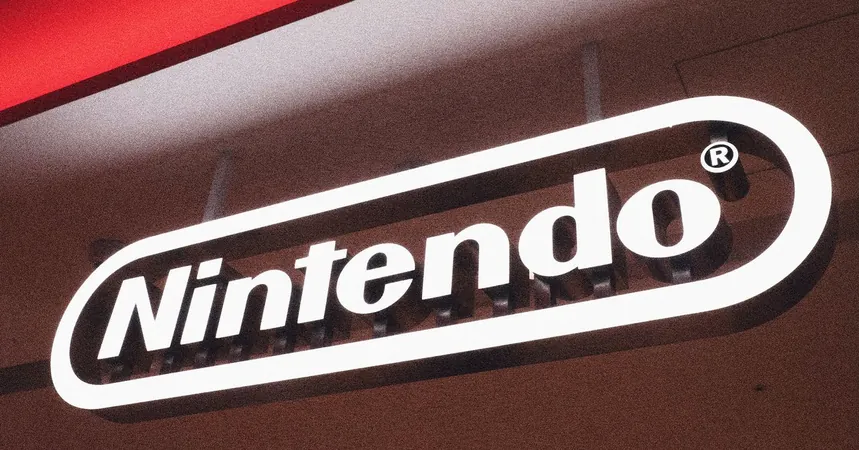
Movie Theaters Navigate a Rocky Road to Recovery Amidst Changing Tides of Cinema
2025-03-26
Author: Amelia
For over a century, B&B Theatres has delighted audiences from iconic classics like “Casablanca” and “Psycho” to modern favorites such as “The Dark Knight” and “Barbie.” But the beloved family-operated cinema chain, run by the Bagby family, faced unprecedented challenges during the coronavirus pandemic—challenges that shook the very foundation of moviegoing traditions.
In an effort to adapt in this new, post-pandemic world, B&B Theatres has transformed its spaces into multi-entertainment venues, offering patrons not just films, but also bowling, pickleball, arcade games, and cocktails. Bob Bagby, the company’s CEO, emphasized the need for diversification: “The pandemic made us realize that we need to diversify. We can’t just depend on studios to provide us with what we need to drive our business.” Indeed, these adaptations have become crucial in keeping theaters alive and attracting customers who may have grown accustomed to staying home to watch streaming services.
B&B Theatres has already opened four of these entertainment-rich locations across states like Missouri, Mississippi, and Texas, with plans to open more. Bob’s son, Brock Bagby, who serves as president, likened running the revamped venues to managing a cruise ship rather than simply operating a traditional movie theater, saying, “It’s also a bigger risk; they’re much more expensive to build. But we need to create a better mousetrap to get people to come.”
Unfortunately, not all theaters have been as fortunate. The movie theater industry continues to struggle as attendance and box office revenues decline, five years after COVID-19 came to a head. Major chains such as Regal Cinemas and Pacific Theatres have closed locations or filed for bankruptcy as they grapple with stiff competition from streaming platforms. Research by media consultancy Omdia reveals a staggering reduction of 5,691 screens across North America since pre-pandemic days.
While box office gross numbers remain dismal—with projections for 2024 dropping to $8.7 billion, a 23.5% decline compared to $11 billion before the pandemic—some industry leaders remain hopeful. “Recovery isn’t at hand, but it’s just around the corner,” predicts Adam Aron, CEO of AMC, which is the world’s largest cinema chain. The upcoming release of highly anticipated films from franchises such as “Jurassic World” and “Mission: Impossible” could breathe life into theaters. Studios plan to unveil approximately 110 films this year, an increase that cinema owners are eager to see.
However, the industry faces a fundamental challenge: some 15% to 20% of moviegoers have yet to return to theaters after the lockdowns ended. John Fithian, co-founder of consulting firm The Fithian Group, warns, “We need to find a way to get people back into the habit of going to theaters.”
Innovations are underway as theater owners revamp their offerings and adapt to modern consumer preferences. From selling a wider range of snacks to enhancing loyalty programs, theaters aim to draw in audiences once more. Even experiments with variable pricing—charging different amounts for blockbusters vs. lesser-known films—are being explored despite concerns over thin profit margins.
Moreover, there’s a growing demand for premium formats, such as Imax and 4DX, which provide an exhilarating cinematic experience. These formats, which often cost more, have contributed to box office revenues even amid lower attendance figures, with Imax drawing dedicated fans willing to travel for the best experience.
Despite these measures, challenges remain. Financing for upgrades and renovations is difficult to secure amid ongoing concerns about economic downturns and bankruptcies. Cinema operators like Michael O’Leary from Cinema United emphasize the need to reframe industry conversations, focusing on the future of cinema rather than lingering on past hardships.
Ultimately, the love for movies runs deep within families like the Bagbys. Bob Bagby reflects on the joy that cinema brings: “What makes this different than owning a Target or hardware store is that every week the movies change and we’re selling something new. The merchandise is always different, and that makes this a magical place to work.”
As theaters look ahead to brighter days, the resilience and innovation of family-run establishments like B&B Theatres could very well lead the way in revitalizing the cinematic experience, transforming it into an entertainment hub that attracts and retains audiences for generations to come.









 Brasil (PT)
Brasil (PT)
 Canada (EN)
Canada (EN)
 Chile (ES)
Chile (ES)
 Česko (CS)
Česko (CS)
 대한민국 (KO)
대한민국 (KO)
 España (ES)
España (ES)
 France (FR)
France (FR)
 Hong Kong (EN)
Hong Kong (EN)
 Italia (IT)
Italia (IT)
 日本 (JA)
日本 (JA)
 Magyarország (HU)
Magyarország (HU)
 Norge (NO)
Norge (NO)
 Polska (PL)
Polska (PL)
 Schweiz (DE)
Schweiz (DE)
 Singapore (EN)
Singapore (EN)
 Sverige (SV)
Sverige (SV)
 Suomi (FI)
Suomi (FI)
 Türkiye (TR)
Türkiye (TR)
 الإمارات العربية المتحدة (AR)
الإمارات العربية المتحدة (AR)